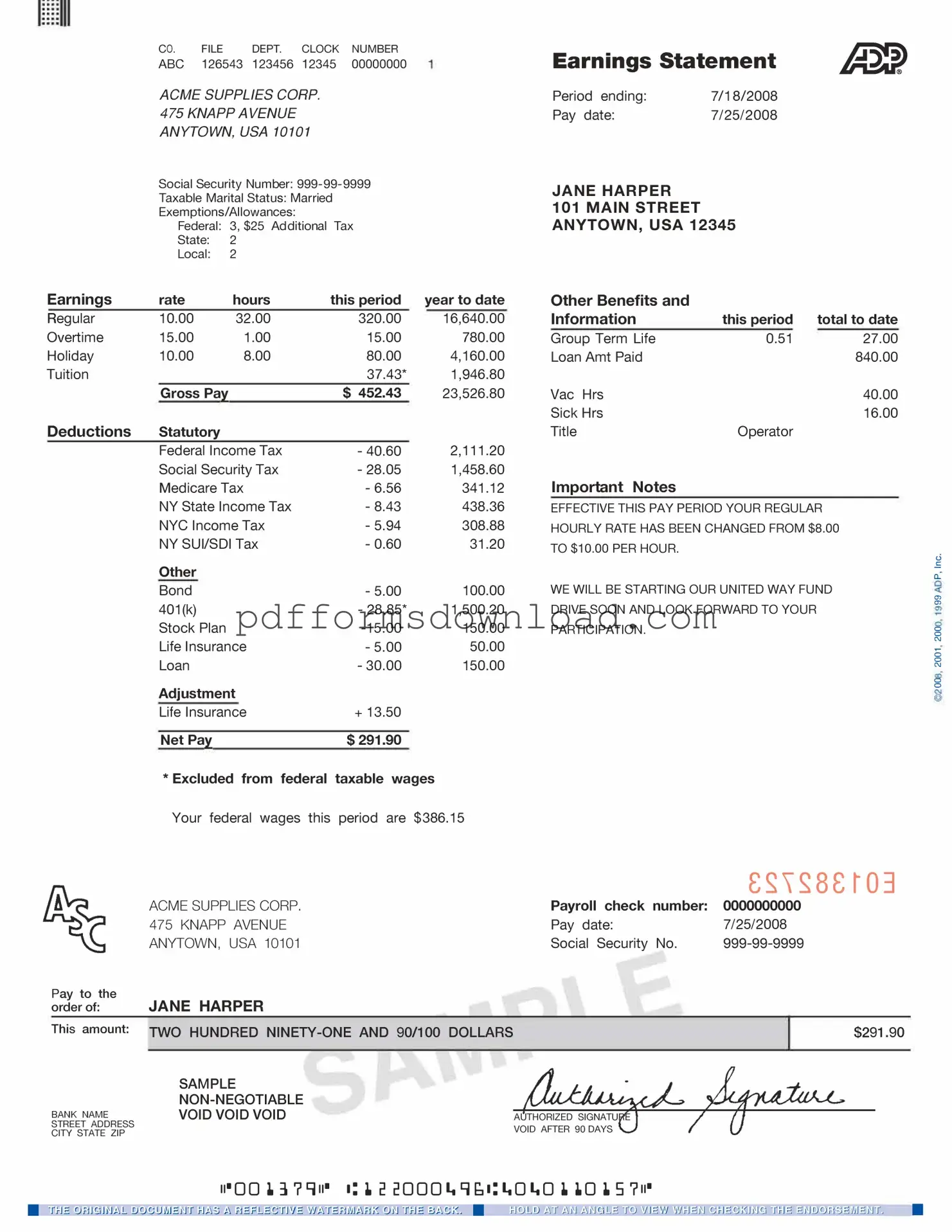What is an ADP Pay Stub?
An ADP Pay Stub is a document provided by employers using ADP payroll services. It outlines an employee's earnings for a specific pay period, including gross wages, deductions, and net pay. This document serves as a record of income and can be used for various purposes, such as applying for loans or verifying employment.
How can I access my ADP Pay Stub?
Employees can access their ADP Pay Stubs online through the ADP portal. After logging in with their credentials, they can navigate to the "Pay" section to view and download their pay stubs. For those who prefer paper copies, employers may also provide physical pay stubs during pay periods.
What information is included on an ADP Pay Stub?
An ADP Pay Stub typically includes several key pieces of information. This includes the employee's name, pay period dates, gross pay, deductions (such as taxes, health insurance, and retirement contributions), and net pay. Additionally, it may show year-to-date earnings and deductions, providing a comprehensive overview of an employee's financial status throughout the year.
What should I do if I notice an error on my pay stub?
If you find an error on your ADP Pay Stub, it is important to address it promptly. Start by reviewing the details carefully to confirm the mistake. Then, contact your employer's payroll department or HR representative. They can assist in correcting any discrepancies and ensuring that your records are accurate.
Can I receive my ADP Pay Stub electronically?
Yes, employees can opt to receive their ADP Pay Stubs electronically. Many employers offer this option to streamline the payroll process and reduce paper usage. By choosing electronic delivery, employees can access their pay stubs anytime through the ADP portal, making it convenient to keep track of earnings and deductions.
What should I do if I forget my ADP login credentials?
If you forget your ADP login credentials, you can easily recover them by using the "Forgot Password" feature on the ADP login page. This process typically involves verifying your identity through email or security questions. If you continue to experience difficulties, contacting your employer’s HR or IT department can provide additional assistance.
